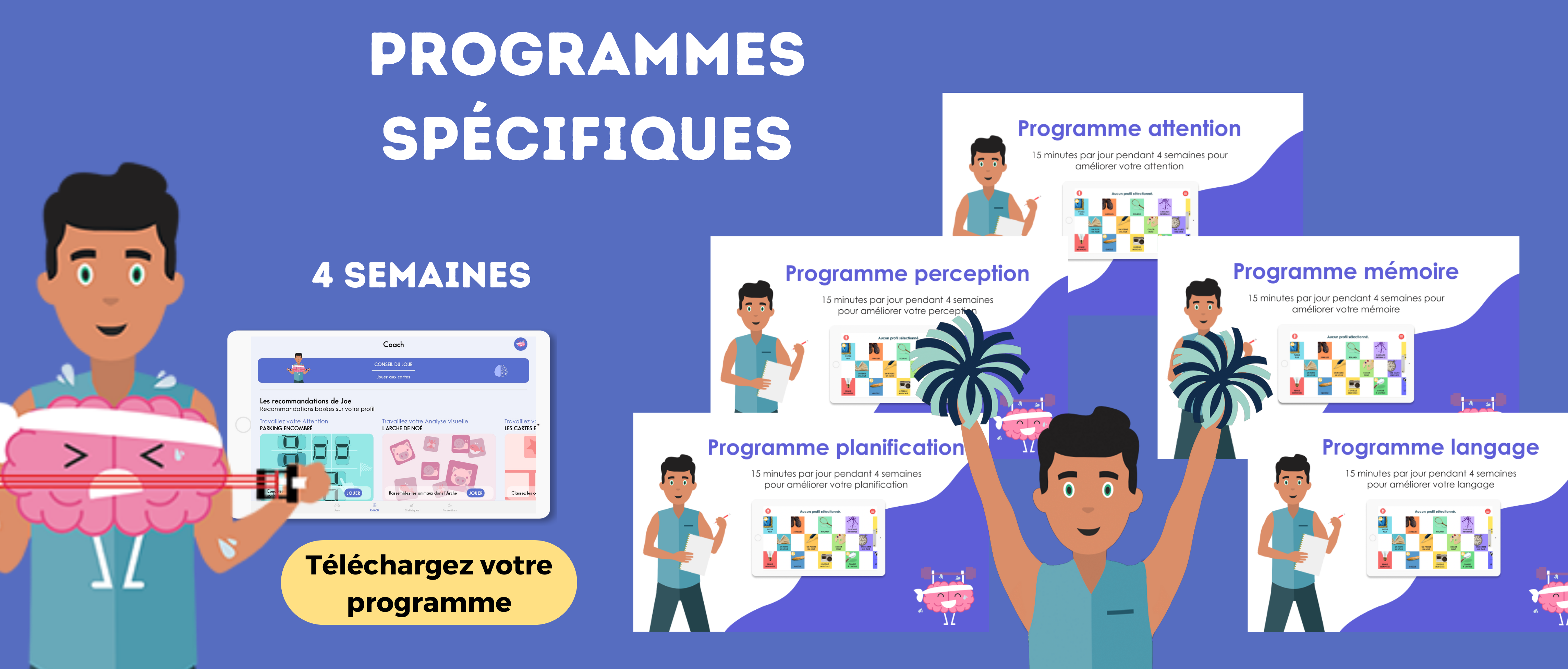Work
MENTAL AGILITY
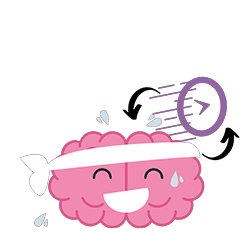

Preserving mental agility
Regularly stimulate mental agility through a variety of challenges

Enhancing cognitive flexibility
Targeted training for easy transition from one task to another

Applications in everyday life
Helps make quick decisions and solve problems

Mental agility is a function that enables us to adapt quickly to the environment around us, to a situation or to a stimulus. It’s thanks to mental agility that we can cope with different situations and know what to do depending on the context and the people we’re with.
Our brain is capable of memorizing the effects of our actions, and it can predict which behavior will have the best result depending on the situation, making the task flow smoothly, quickly and efficiently.
What is mental agility?
Mental agility is therefore the ability to modify one’s behavior or thinking by adapting to the context. This skill is linked to the speed of our thinking. Indeed, when faced with a situation, we must not only find the right strategy, but do so as quickly as possible.
During our lives, we learn how to handle situations, what words to use or how to behave in certain contexts, and we memorize strategies for solving problems.
Mental agility enables us to explore all the knowledge we have, and choose the best resources to use. We must therefore be able to quickly find the best strategy and implement it. Finally, we need to be able to modify our strategy and behavior according to feedback, to see whether the chosen strategy is effective or not.
This skill makes it easy to adapt to new situations.
Mental agility disorders
When we talk about mental agility disorders, we’re talking about slow processing speed. This can be caused by pathologies or developmental disorders, such as ADHD, dyslexia, dyscalculia or auditory processing disorder.
These difficulties can cause children to have difficulty learning, planning goals, solving problems with logical strategies, or ultimately reducing their ability to modify their thoughts and behaviors.
Processing speed also coexists with autism spectrum disorders, and with other pathologies such as dementia (Alzheimer’s) or illnesses such as schizophrenia in which processing speed is greatly affected.
Mental agility disorders can occur at any age. That’s why it’s so important to train this cognitive function.
Exercises to train and improve mental agility
To improve your mental agility and therefore your speed of reasoning, it’s important to develop your own strategies.
The first thing to do is to strengthen the connections in the brain. To do this, it’s important to try and make logical connections in everyday situations. For example, when you go shopping, you can think of the best route to take according to your experience (last time you went for the eggs first, but it’s better to take them afterwards), or a recipe made with the ingredients you see.
When faced with a problem, try to think of all possible solutions, even the most absurd ones. This exercise allows you to work on finding other solutions, rather than just focusing on one strategy.
Our games for working mental agility
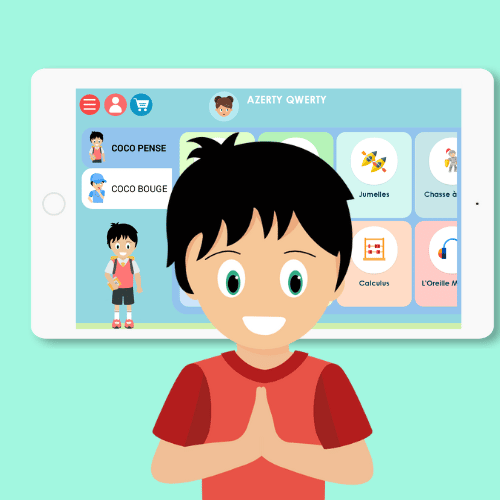
- Brainstorming
- Noah’s Ark
- Simili
- Moles Invasion
- Suite Infernale
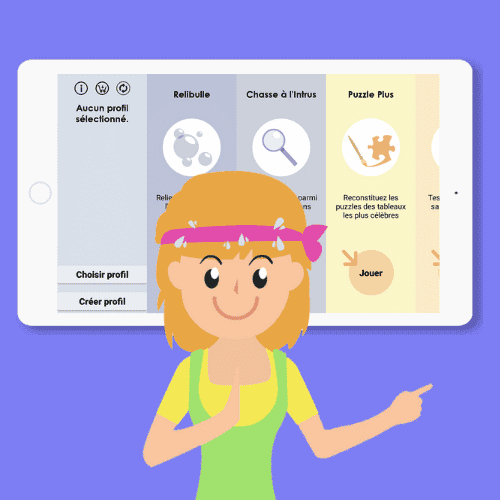
- Brainstorming
- Noah’s Ark
- Mock
- Mole invasion
- Suite Infernale
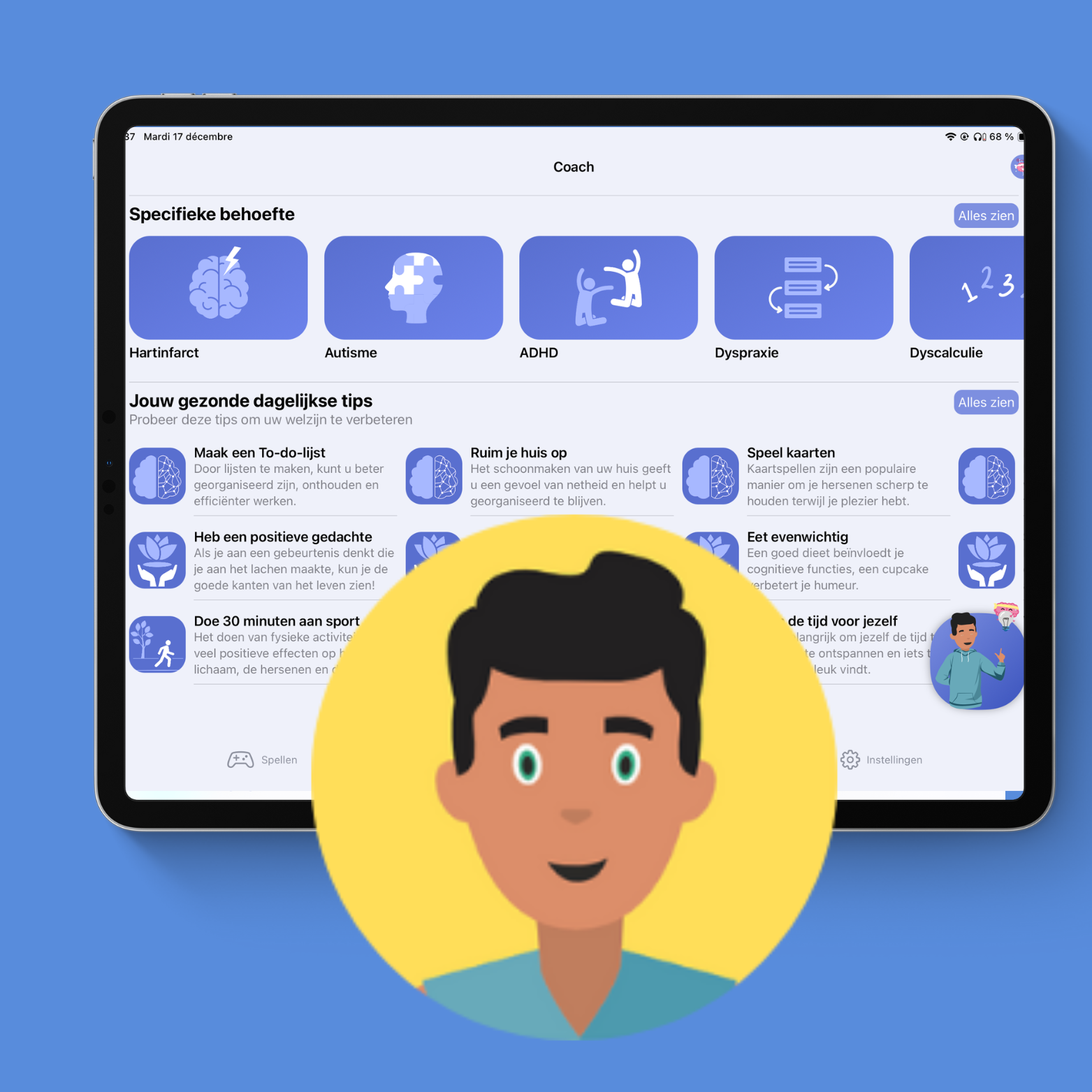
- Brainstorming
- Noah’s Ark
- Mock
- Mole invasion
- Suite Infernale
Mental agility enables us to adapt to the situation thanks to 4 mechanisms:
1. Smooth task completion
When we do something, our brain has to be able to foresee the effects of our actions. What’s more, we need to already know all the actions we need to take, so we don’t stop at every step. This allows us to act knowing what we want to achieve or do, and therefore being ready for the next action.
Noah’s Ark
Drag the animal pairs to the ark.
Here, there are several animals on the screen, so you’ll have to choose which animal to start with, and select its double, as we know that’s the task required.
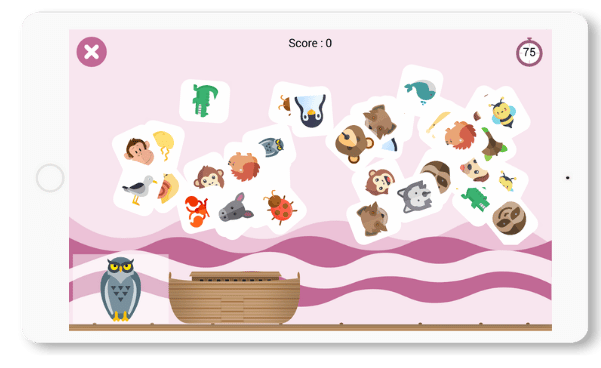
What’s more, as you slide the second animal into the ark, you already know which animal will be next.
To make the exercise as smooth as possible, we start with the animals in the foreground, where we can directly identify their peers.
2. Response time
Response time is the time that passes between the reception of the stimulus and our response.
It’s the speed with which we process information, think of a solution and put it into practice. Response time does not include the time it takes us to finish a task, but the time it takes us to find the right strategy to follow. This mechanism also enables us to avoid dangers, for example if there’s a ball coming towards us, we can dodge it if we have a good response time.
Mock
In this game, you have to find the duplicate image.
Here, we’re working on response time, because we have to analyze all the images, and find the duplicates as quickly as possible.
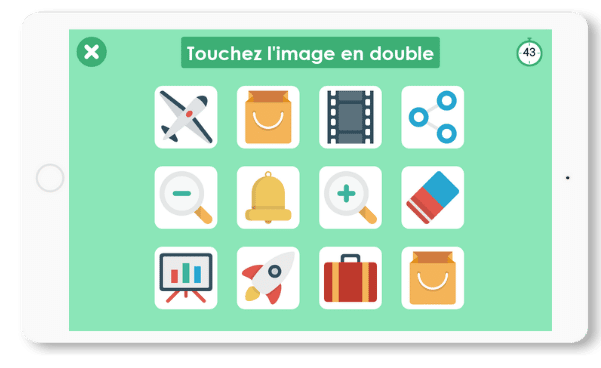
3. Task automation
Once you’ve performed a task several times, you can automate it.
This means that you can do it without paying attention, and therefore with greater ease, since you don’t have to think about how to act, or what strategy to use. There are many tasks that we automate in the course of our lives, from the simplest, like walking or tying our shoelaces, to the most complex, like driving.
Suite Infernale
In this game, the player must press the button when the numbers presented form a sequence. Recognizing numbers and sequences can be automated when you don’t need to count or think hard about which numbers are needed to form a sequence.

4. Stimulus recognition speed
In the environment in which we live, we receive many different stimuli. So it’s important to recognize them quickly, to know which ones are important. Recognizing stimuli also helps us to get our bearings, and to better understand the situation, the possible difficulties and the help we can get.
Mole invasion
In this game, the player has to touch the moles that appear on the screen, without knowing when or where they will appear.
The moles are not all the same, so the person has to recognize them to know what action to take: the normal mole to tap once, the mole with the helmet to tap twice, and the mole with the glasses not to touch.
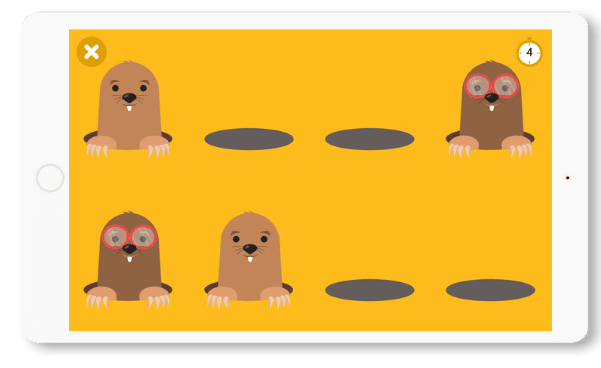
Moles are differentiated by small details, so it’s important to be able to analyze images quickly before they disappear.
Want to improve your mental agility?
Our games have the following 3 impacts:
-
Stimulate mental agility on a daily basis: Our games are designed to train mental agility in a progressive and targeted way. The “Syllabus” game, for example, requires players to match syllables quickly, thus stimulating cognitive flexibility and creativity. This enhances the ability to move from one task to another and to solve problems more fluidly.
-
Reinforcing rapid decision-making: Games also promote rapid decision-making by simulating situations where the user has to react quickly, as in “Calculus”, where you have to solve mathematical calculations. This improves thinking speed and the ability to make decisions under time pressure.
-
Applications in everyday life: Working on mental agility with our games has a direct impact on managing everyday challenges. For example, cognitive flexibility training can improve the ability to react quickly to unexpected situations, or to adjust one’s approach to complete a task more efficiently.
Discover our attention training programs with our coaches!
COCO THINKS and COCO MOVES
A version for children aged 5 to 10

CLINT
A preventive version for seniors

SCARLETT
An easy and adapted version for seniors

Follow a training program for 4 weeks
ATTENTION PROGRAM
For 4 weeks, follow our program to work on attention by playing our specially selected games for 15 minutes a day.
MEMORY PROGRAM
For 4 weeks, follow our program to work the memory by playing our specially selected games for 15 minutes a day.
LANGUAGE PROGRAM
For 4 weeks, follow our program to work on language by playing our specially selected games for 15 minutes a day.
PLANNING PROGRAM
For 4 weeks, follow our program to work on your planning by playing our specially selected games for 15 minutes a day.
PERCEPTION PROGRAM
During 4 weeks follow our program to work on perception by playing our specially selected games for 15 minutes a day.
Complementary exercises at home to work on your mental agility
Vary your daily routine
-
Change your routine: Every week, change part of your daily routine, such as taking a different route to work or changing your lunchtime. This stimulates your mental flexibility.
-
Try new activities: Introduce new tasks into your schedule, such as learning a musical instrument or trying out a new sport, to boost your mental agility.
Engaging in cognitive challenges
-
-
Solve complex puzzles: Solve puzzles like Sudoku or crosswords to train your brain to think logically and creatively.
-
Make quick mental calculations: Practice making simple calculations (such as addition or multiplication) without using a calculator, which stretches your mental agility.
-
Learning to think in multiple dimensions
-
-
Mental visualization: Close your eyes and imagine an object or scene in detail (shapes, colors, textures) to train your brain to see beyond immediate information.
-
Multilevel problem-solving: Look at a problem from several angles to find multiple solutions. This helps you develop more flexible thinking.
-
Stimulate your working memory
-
Active memorization: Learn a list of words, numbers or phrases and try to recite them in reverse order to stimulate active memory.
- Retain complex information: Read a complex article, then try to summarize the gist of what you’ve read without consulting your notes. This improves retention and manipulation of information.
Practicing cognitive empathy
-
-
-
Adopt an outside point of view: In a discussion or decision, try to understand the other person’s argument, even if it differs from your own. This helps broaden your perspective and increase your mental flexibility.
-
Role-playing: Take part in role-playing games where you have to make decisions or take on the role of another person to improve your ability to adapt to different situations.
-
-
Improving time management under pressure
-
-
Working under time pressure: Set yourself a short deadline for completing a task to stimulate rapid decision-making. For example, give yourself 10 minutes to write a summary or solve a problem.
-
Multi-task: Practice juggling several tasks at once, such as answering an email while listening to a podcast, to develop your mental agility.
-
Stimulating creativity
-
-
Word games: Create word associations or rhyming games to train your mind to think differently. For example, take a word at random and find 10 other words associated with it.
-
Propose alternative solutions: For each situation or problem, write down at least three different solutions. This helps you think more creatively and flexibly.
-
Learning to manage change
-
-
-
-
Reacting to the unexpected: When the unexpected happens (e.g. change of schedule, added task), try to adapt quickly without stress. This practice makes you mentally more agile in the face of the unexpected.
-
Accept uncertainty: Get used to making decisions even without all the information, which helps you to accept uncertainty and act quickly.
-
-
-
Engaging your brain with interactive games
-
-
-
Strategy games: Play strategic board or video games that require you to anticipate several moves in advance. These games require you to think fast and manage different options simultaneously.
-
Visual memory games: Use visual memory cards or applications that require you to memorize visual elements and retrieve them quickly, developing mental agility and speed of thought.
-
-



